From their website: "In April 1984, the idea for the Texas Shakespeare Festival was developed: to establish a professional summer theatre for East Texas based in Kilgore that would be housed in the Van Cliburn Auditorium; to create a company with a name that would have broad appeal to professional theatre artists, employing high caliber actors, designers and directors from throughout the nation; to offer professional actors and theatre students the luxury of working on plays from the world’s storehouse of dramatic literary masterpieces; and to create a regional play about the East Texas oilfield discovery to be produced as a cultural historical memento of our unique and colorful heritage. Two years later, in June 1986, the Texas Shakespeare Festival opened its inaugural season as Kilgore College’s contribution to the Texas Sesquicentennial celebration with performances of Shakespeare’s Twelfth Night, A Midsummer Night’s Dream, and The Daisy Bradford 3 by Gifford Wingate. Each of the fifteen performances played to capacity houses, and the college assured the community that there would be a second season." Which is why for their 30th anniversary season they are producing Twelfth Night and A Midsummer Night's Dream. We went for the Fourth of July weekend holidays. We missed seeing any fireworks and that disappointed Rob. For future reference, Kilgore doesn't do fireworks; you have to drive to Tyler to see them. However, the shows more than made up for it. The festival is held in a lovely theatre on the Kilgore campus that they share with the Kilgore College Theatre Dept. It recently had renovations including new seats and it's got the best air conditioning anywhere in Texas. In fact, it gets so cold in the theatre that the ushers will wander around offering blankets to patrons. We took advantage of the blankets for every show. If you're going to be in Texas, in July, the best place to be is somewhere with really good air conditioning; it's a bonus that you get really good theatre as well. There is a wonderful themed garden just outside with a walking guide sheet available at the gate. It's planted with flowers and other plants that are mentioned in Shakespeare's plays and sonnets. There is even a topiary bear from A Winter's Tale. The lobby has a wonderful display that I kept coming back to, of costumes from previous productions as well as the set models from the current season. Naturally all of the company members photos are posted with what shows the actors are in, or as a group with what technical position they hold. The grounds and Lobby displayThe tourDanny Brown's official title is Audience's Service Supervisor, but he'was so much more than that. He was our tour guide and answered all our questions. The tour doesn't usually include their off-site facility but because I told him I was a costume designer and was particularly interested in seeing the costume shop, he not only took us there, but tracked down the shop manager, Nick Jones, who answered all the questions that Danny could not. Their off-site facility is fairly new. It houses the costume shop and storage space, rehearsal space, a black box theatre, and a kitchen/green room where the company members can hang out and get a bite to eat on their well-deserved meal breaks. They have a wonderful shop with lots of open space, plenty of cutting tables and machines and a very well-organized costume storage room. This year they have two professional designers that design two shows each. Colleen Muscha, the faculty costume designer from Florida State University, designed Twelfth Night and The Nerd, and Jeff Sturdivant designed A Midsummer Night's Dream and Man of La Mancha. Jeff is a New York based designer, currently working on his MFA at Temple University. The children's show, The Princess and the Players is designed by Ellen Danforth, an MFA candidate at University of Illinois-Urbana Champagne. From talking to Nick I learned that the designers begin conferencing with the directors in February. For this particular season, both designers wanted to put one of their shows in the Empire period. The board of directors felt that that would be too similar, so one designer was asked to change his concept. The two shows were Twelfth Night and Midsummer. Jeff had to change his concept, but more about that later. The designers' budgets were $3000 for both Shakespeare's and Man of La Mancha. The Nerd budget was $1200. That's a total costume budget of $10,200 for four shows. This does not include the associate productions that open later on in the season, after the mainstage plays are up and running. The associate plays have a budget of $1000 which has to cover the build for the children's show, The Princess and the Players, The Belle of Amherst, a one woman show about Emily Dickinson, that is staged in the black box, the Chinese show, and the company talent show. The Chinese show is put on by a group of Chinese students that come every year to take classes from the company members in Shakespeare. They write and direct their own version of a Shakespeare play that gets one performances later on in the season. The company talent show is just a chance for the company members (all of them, not just the actors) to showcase their other abilities for a one night only entertainment. Of course most of the money goes toward costumes for the children's show. The Belle of Amherst one has one costume and it's the same one they used last year. The Chinese show pulls from stock as do the company members for their talent show. The shop gets the sketches in March from the designers. There is only a Hancock's locally, so if they have to make a run to Dallas for fabric that must be done before the build period starts in June. The shop employs 13 costume technicians. Most of them teach at universities from all over the country; and all of them have MFAs in Costume Technology. They have one non-MFA and she is a Junior working as an Intern this year. Each of the four mainstage shows gets 5 days of build time in the shop. They rotate shows each week. Fittings usually happen starting Wednesday of that week. Fittings are very tightly scheduled by the stage manager because the actors actually rehearse all four shows every two days on a rotating basis. Everyone works from 9-12:30, gets lunch, works 2-5:30, then gets dinner, then works 7-10:30. So there are three rehearsal periods in one day but all four shows get rehearsed in the course of two days. Every actor usually is only cast in 3 of the 4 shows. Some actors are only in 2 of the 4, so scheduling can be a nightmare. Once a costume is ready for a fitting, that actor might not be available at all on that Wednesday if he is called for three rehearsals. All of the costumes must be completed by the end of the week, because the shop staff must go on to the next show. The first set of costumes are put aside on a rack, and the next show must be started. It's a grueling schedule which is why they get Saturday and Sunday off during the build. Once the run begins, it's slightly better, because they are only building costumes for the Children's show, as well as maintaining the costumes for the mainstage shows. A bit about the sceneryThe Kilgore College theatre department's scene shop is a tiny hallway-like room that is immediately backstage. It is so small it is only used as a green room for the actors during the show. All the scenery for the festival is built outside on the square between buildings. This is the first year they have had a tent to build under and only due to the excessive amount of rain Texas got this May/June. Let me repeat that: They build all of the scenery, outside, in the summer, in Texas, all day till 10:30 at night, five days a week, and they've been doing it this way for 30 years. These are some dedicated people. The set models were on display in the lobby. There are pictures below. I tried to get photos of the actual sets as well to compare. The only set I didn't get a photo of was Twelfth Night. If you look at the model you can see big white slatted screens that are closed up on either side of the stage. Those screens were closed at the top of the show and were the background for Theseus' residence, so that they were also closed for the end of the play as well, when "Pyramus and Thisbe" is performed before the King. I caught Carson Craig, the Assistant Technical Director, in the hallway at one point and asked him questions about their build process and budget. Carson told me that their scenic budget for the five shows is $13,000. The sets this year were designed by just one designer, Fred Duer, which Carson said has simplified both the builds and the change overs a lot. The scene shop is staffed with 14 people who are responsible for the build. During change overs, the props, lighting, sound, and stage management staff all pitch in, which brings their crew up to 31 people. Each change over is accomplished in 90 minutes, which happens twice a day every day except Mondays which are dark. Carson mentioned the challenges of having a trap door in three of the four set designs. The Nerd is the only set that didn't make use of the downstage trap. In fact, there are two trap doors in Midsummer, the downstage trap and an upstage trap. The downstage trap opens out, while the upstage trap opens in. Carson said it was quite a challenge to rig the "open in" trap to stay shut with actors jumping up and down on it and Titania sleeping on it. After The Nerd we stayed for the "change over" where the matinee set is struck and replaced by the set for the evening performance, which was Twelfth Night. The change over is narrated by one of the scenic crew so that non-theatre people would understand what was happening. There were a maximum of nine platforms on stage for the largest set; the largest two of them stay on stage for all four show. As the set is taken apart, the pieces are carried out and put on a semi trailer to be stored until the next time that show is performed. All the platforming is faced with different paint treatments specific to each show and then screwed onto the platforms as the are set in place. Every screw must be accounted for each time they do this. We watched for the first hour as they took The Nerd platforms off and replaced them with the Twelfth Night scenery. As each line of platforms disappeared, the overhead electric would fly in and technicians would change out the gels. They only have four moving lights at his point. Below are some photos of The Nerd set going away. Man of la manchaThis was the first show that we saw, as a matinee. it was a great show. The costumes were designed by Jeff Sturdivant. Direction by Lenny Banovez. This is the one that made Rob "feel feelings" and cry. The set design was very impressive. Besides being designed to look dank, moldy, cold, and unforgiving, there was a fire pit, a cistern, a trap door, and a working drawbridge. When Miguel Cervantes enters the prison, he is led down the drawbridge by his guards. The giant piece of erector set looking metal was lowered into the space with all the attendant clanking and groaning sounds you could possibly imagine that old rusty chains would make. The drawbridge is used three times in the show and every time it moved it was the star attraction. Carson talked a lot about how they decided to build it so that it would be safe for the actors, including the testing he personally did on it after it was all welded together; by "testing" Carson meant "jumping up and down on". He figured if he couldn't break it, then it was safe. The actress who played Dulcinea, Caitlyn Hargrove, was also the choreographer. She did a wonderful job with the dancing bits, especially with the gypsies. Lee Ernst, the director of The Nerd, was the fight choreographer, and Micah Goodding, who played Duke, was the fight captain. The "dance fighting" bits were exceptional. Ever since West Side Story showed two street gangs dancing around each other with switchblades, "dance fighting" has become a thing. Michael Jackson used dance fighting in "Beat It" and "Bad". This production's dance fighting was better. In terms of costumes, everyone was in tatters just like you'd imagine. Jeff used a dark color palette and everything was overdyed, distressed, stained, and faded. I wish I had a photo to show you of the Knight of Mirrors costume. It was marvelous. The thing that impressed my husband the most was right at the beginning where Cervantes transforms into Don Quixote using only what's in his trunk in a very short amount of time while he's delivering dialogue. Of course, having seen three different versions of this show before now, I know that it's scripted that way. That the trunk has a mirror in the lid with a tray for his makeup and beard; his breastplate and helmet are in there too. All the actor has to do is make an attempt at old age makeup, grey his hair, and glue on a beard while saying some lines. The actor playing Sancho Panza helps him with his breastplate, he puts on his helmet, and then is handed his lance and sword, and he's done. But for Rob, the transformation was magical. Rob got to chat with Caitlyn H. (Helena) at the Midsummer panel the next day and was amazed to discover that she had also played Dulcinea. When he told me I couldn't believe it either and I'm a costume designer. It's my job to transform actors into someone else. Of all people, I should have been able to see through the makeup and hair and recognize her from the earlier show, but I didn't. That's how good it was. Not only did the makeup/hair designs completely change her appearance, the actress herself became another person entirely. She was that good. She told Rob that she was thinking to herself before the performance of La Mancha, that "I don't have to sing this role for another four days, I'm going to sing it as hard as I can." And she did. Her performance was completely off the hook. Then she told Rob, "Afterwards I remembered, oh yeah, I still have to do Midsummer tonight." It was a good thing that Dulcinea spoke in a lower register and gruff-voiced while Helena spoke in an upper register and sweet-voiced. Another reason I didn't recognize her at all. A midsummer night's dreamDirected by Steve Tague. Costumes by Jeff Sturdivant. After the show, we got to talk to two of the actors, Goran Norquist who played Bottom, and Fred Geyer who played Demetrius. It was both their first season with the Festival. They are the ones who told me what the actors' rehearsal schedule was like. The next day we got to attend a post show panel discussion with some of the actors as well as the Assistant Technical Director, Carson Craig. The Associate Artistic Director, Meagan Sullivan, led the discussion. Meagan is also a member of Actors' Equity Association. The most interesting thing to come out of the discussion about Midsummer, is that Jeff's first idea had been to set the costumes in the 1970's. He was told that at this Shakespeare festival, the audience expects period costumes and the 1970's wouldn't do at all. After Jeff's idea of designing in Empire period got shot down so that Twelfth Night would be the only show with Empire costumes. Jeff and Steve, the director, seemed to have a bit of a problem figuring out where to set the time and place. For a long time, it was going to be in the Australian Outback. So much so that the scenic designer, Fred Duer, designed a Boab tree for the central piece in the forest set and the scene shop had already built it , when Steve decided to change the placement to a Louisiana Bayou in WW2, just days before the costume build began. It was obvious from watching the show that there was no unity among design elements. The set had a giant Australian tree smack dab in the middle of it and was then surrounded by an attempt at Louisiana swampland. The music was Zydeco, the mortals wore WW2 era clothing with Theseus in a military uniform. Yes, Theseus has been at war, but with Hippolyta, whom he has conquered and brought back as a trophy. I'm pretty sure the Amazons weren't fighting for the Axis powers in WW2. Hermia and Helena were very natty in their Dior New Look dress and Katherine Hepburn pants; Helena's Victory Roll hairdo was a nice touch. Demetrius and Lysander were also pretty snazzy in their suits, but the whole thing didn't make any sense. The faeries were the most confusing. Yes, Puck and the chorus of faeries were appropriately floral and leafy, but no wings. Titania was in a long blue and purple wig with what could have passed for an Evening gown on the red carpet today. Oberon's costume was much more confusing, in a cape and wig of feathers, with shiny MC Hammer pants, beads and a cross around his neck. The faeries are Pagan, pre-Christian, that's the whole point of them. Oberon should be the last character to wear a cross around his neck. Unless Jeff and Steve were trying to make some sort of voodoo statement and if that was the idea, it didn't read. Having just done this show I was underwhelmed by the costume choices; the fairies didn't even have wings. But that's what happens when the concept doesn't arrive fully formed in the design team's heads and they are desperately trying to come up with something under an impending deadline. There was no Changeling Boy, although they had asked for one and The Nerd required a boy actor. They were told it was impossible to get the child actor from The Nerd to come in for additional rehearsals for Midsummer since he lived a hour away and his mother had to drive him in every day. The actors' playing the Lovers revealed in the talk back that Steve changed their big fight scene blocking three times and the final version wasn't set in stone until tech week. However, even with all these late decisions and changes made to the tech and blocking, it was still the best acted and directed MIdsummer I've ever seen. I've told you about the drawbacks, now let me tell you about the virtues of the production. First and foremost the script was uncut. Every single word was spoken. I've never seen another Midsummer where the text was left complete. Having all the words makes the prior relationship between Helena and Hermia much more complex and profound when magic tampers with their friendship. The faeries' magic is much darker in this version. The way the director showed us Titania manipulating Bottom to stay with her using magic when he clearly was afraid of her and wanted to leave brings a whole other dimension to the faerie world that most productions don't give you. To the Elizabethans, the fae were not to be trusted and not in the way that mischievous children might not be trusted by adults, but in the way that loan sharks are not your friend. Oberon uses the same dark magic on Titania to get her to give up her Changeling Boy when she clearly has no intention of ever letting him go and she has no memory of it. Oberon controls Puck's actions with magic as well. These are clearly very powerful creatures who have no interest in mankind's benefit. They are not altruistic, they only do what pleases them at the moment. Another aspect of the darker magic in the forest was its effect on the Lovers. As they got deeper into the forest, they became more childish, and as they reverted to a more primal "natural" state, they started to shed bits of their adult skin--their clothes. The took off and left behind all of the outward signifiers of adult logic, reason, and status. The suit jackets were the first to go, purses were lost, hats, thrown off, everything that buttoned up, undone and discarded, until they were left in their soft white cotton boxers, undershirts, briefs, and A-shirts, tap pants, braissiers, and slips. Hair was a mess, snood gone, Victory roll defeated. Just naked, sweaty children having a good old temper tantrum amongst themselves, and then too tired to carry on, they collapsed on the ground to get their nap out. Another element that worked really well was the scenes with the Rude Mechanicals. I loved their costume choices, all in working attire, overalls, and the like with aprons, and heavy work boots, and hats. Steve made it clear that the other men truly loved Bottom even if he was a bit of an egotist and they were truly scared when he was "changed". A running gag was whenever Snug would arrive late to rehearsal, which was every time, he would bring food to the other guys. Normally, the show within the show of "Pyramus and Thisbe" gets cut quite a bit because it drags on for so long, also the impulse for the actor playing Bottom is to really ham it up and this makes not for a groaning audience, but for an angry one. In the hands of these professional actors--Goran Nordquist as Bottom, Micah Goodding as Peter Quince, Jeff Raab as Starveling, Henry Ayres-Brown as Snout, Billy Reed as Flute, and Peter Hargrave as Snug--the audience only wanted more of them. They were honestly funny, honestly frightened, and honestly just trying to put on the best play they could for their King. The nerdThe Nerd was directed by Lee Ernst and costume designed by Colleen Muscha, both of whom have a connection with playwright Larry Shue. Larry Shue was a company member at Milwaukee Repertory Theatre back in the 1980's. Ernst met him at the hotel that company members stayed in and they became friends. Ernst was there for the original production of The Nerd in which Larry Shue played Willum, and Colleen Muscha designed the costumes. Later Ernst also became a company member of MRT and went on to play Willum in the 1996 revival of The Nerd. Nick told me that Colleen had wanted to do The Nerd one more time, and that is why she came to Texas this summer. I have a particular fondness for The Nerd because I played Tansy in the production we did at Texas A&M back in the late 1980's. It was hilarious back then, and time has not altered its hilarity one jot. The play was contemporary when it was written in 1981, about a Vietnam vet who is visited by the soldier that saved his life 15 years ago. When we staged the show, a mere 6 or 7 years after it was written, we smoked like fiends in that show. Smoking is a scripted activity for most of the characters, but especially for Axel. Attitudes have changed considerably in the last 35 years and it was apparent in this staging. The only smoking that was going on in the performance was perfunctory and only as demanded by the "chimney" bit in Act 2. Colleen's costume designs were exactly as expected. There is no need to tamper with perfection. Rick's costume was exactly as scripted: white, short-sleeved dress shirt, with black tie, pocket protector with numerous pens, black heavy framed glasses taped together, pants hemmed too short, with mismatched brown and blue socks, and hair slicked down into a side-part with what must have been Brylcreem. Just imagine Robert Carradine's Lewis Scholnick in Revenge of the Nerds, which came out 3 years after Larry Shue's play, so it wouldn't surprise me at all if the entire idea for the movie had been stolen lock, stock and barrel from Milwaukee Rep. And, of course, Rick makes his first entrance in a Creature from the Black Lagoon costume (because he thinks Willum's birthday party is also a Halloween costume party) that I had completely forgotten about. Twelfth NightDirected by Deb Alley. Costumes by Colleen Muscha. Original music by Andrew J. Tarr. The acting was superb. This was the show that made me feel feelings and cry because the music was so beautiful. Twelfth Night was the overall best show of the festival. The costume design was brilliant, the set design was elegant, the original music was just perfect. The music was the real star of the show. I wish they would have released it on a CD. I would have bought it. There are many songs in this play, "I am Slain by a Fair Cruel Maid" "O Mistress Mine" "Come Away, Come Away, Death" "For the Rain, it Raineth every Day" are just a few of them. In general, the majority of the music gets cut from the production, usually because the company doesn't have anyone to write it, or the actors don't have the requisite musical ability to perform it. In this production, not only were no words cut, no songs were cut either. In fact I believe that this production added music to the script. Jeff Raab, as Feste, sang and accompanied himself on guitar throughout the show, as did Henry Ayres-Brown (Curio) and Nathan Salstone (Musician). Viola as Cesario sings to Orlando, Orlando sings to himself, Sir Toby, Sir Andrew, and Maria sing with Fabian and Feste. In fact everyone sings at one point or another except Malvolio who hates all this noisy racket that keeps him awake at night. Contrary to Malvolio's opinion, the music was just gorgeous, I really can't say that enough. In fact, the music is so important to the theme of the play that I found someone else who agreed with me and wrote a blog about the production he? saw at the Hudson Valley Shakespeare Festival. The blogger's name is Stewartry. You should read it too. One last word about the costumes. I've already told you that the show was set in the Regency period. It worked well. Olivia wore a black pelisse over her purple gown. As long as she was in mourning for her brother and father and was steadfastly refusing Orsino's proposal, she kept the black pelisse on. As soon as she becomes infatuated with Cesario and makes the conscious decision to pursue "him", she sheds the black mourning attire and we see her in the lovely lavender gown that she stays in the rest of the show. Orsino begins the show in an elegant silk robe over his light blue tailcoat, striped waistcoat, and white fall-front pants. "Cesario" and Sebastian wear matching uniforms of lavender jacket, striped waistcoat, and blue fall-front pants. with a blue hat. Every part of their uniforms were trimmed with piping in the alternate color plus black, to a very comedic effect. Feste was in an orange/green/gold color palette, with striped fall front pants and a patchwork waistcoat. Sir Toby and Maria were also in orange, orange being the funniest of all colors on stage. The costumes may not have been the star of the show like the music was, but they certainly enhanced the stars' performances. Total cost of the EventTwo tickets to all 4 shows: $180 (if you buy tickets to all 4 you pay for 3 and get the fourth one for free.)
Hotel: $96.87 for one night Tour: $10. The Garden, Panels, and watching the change over was free; the hospitality was priceless. The actors and techies were more than willing to talk to audience members after the show and Danny was the sweetest host ever. Rob got a hug from Caitlyn Hargrave (Helena, Dulcinea, and Maria) after Twelfth Night when he told her how much he liked the show and enjoyed all three of her performances. We are so excited about this festival that we are already making plans to come back next year.
1 Comment
|
CategoriesArchives
July 2024
|

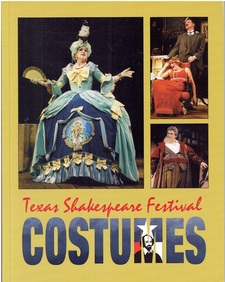










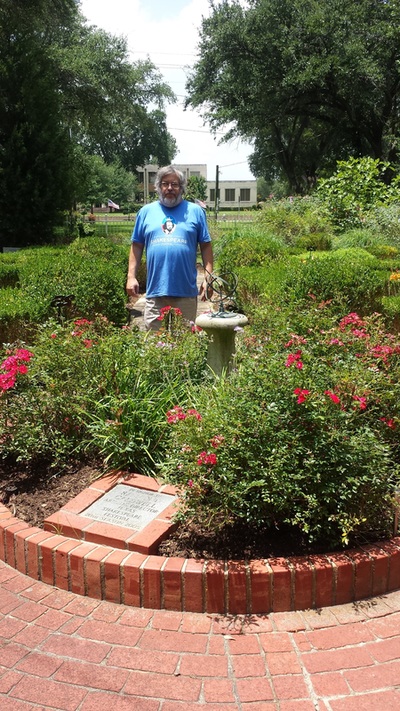
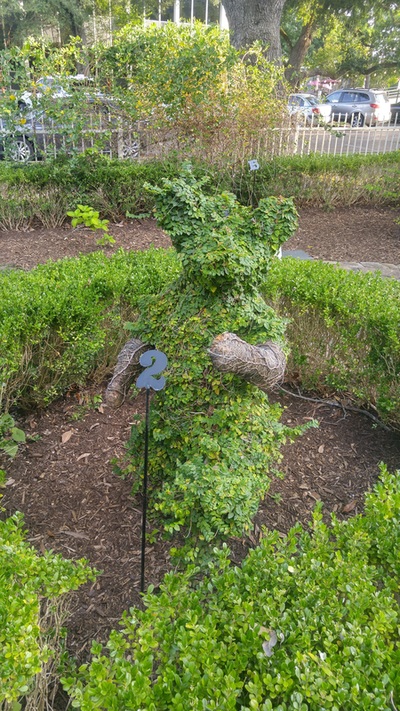



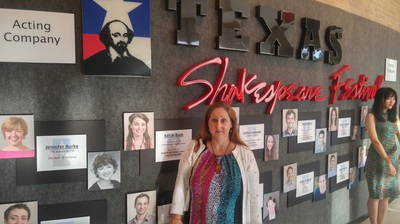
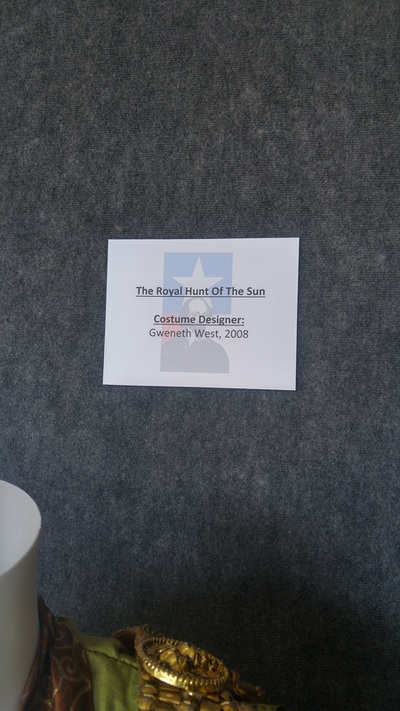
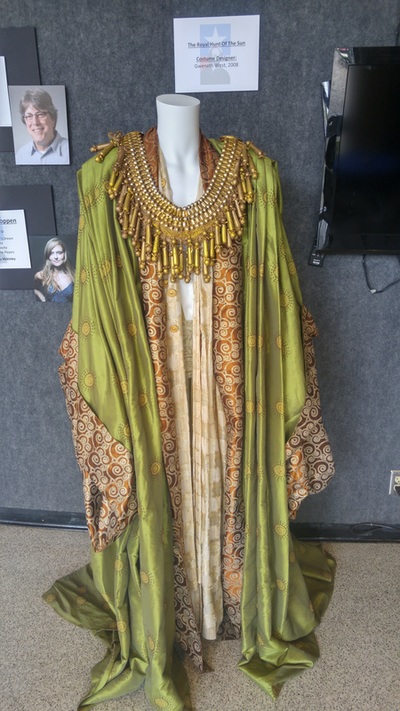














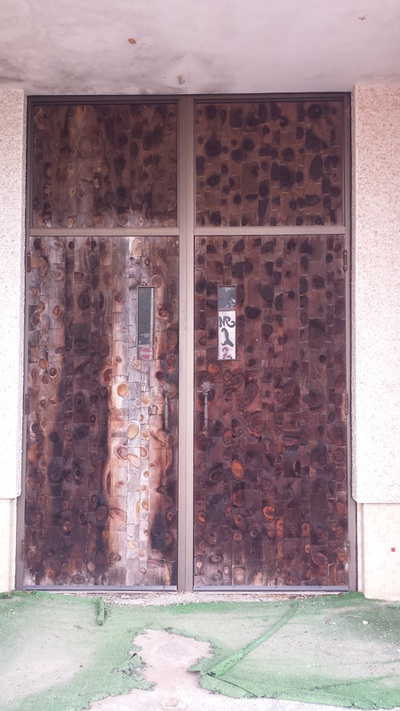




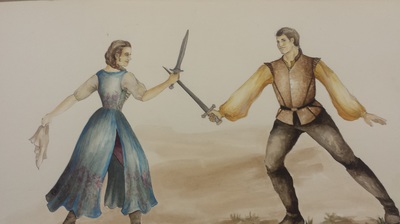


















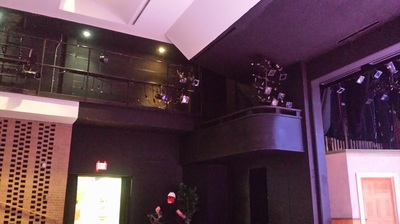

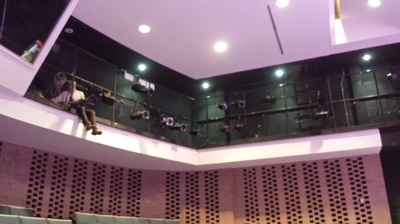





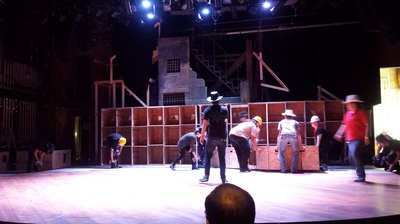
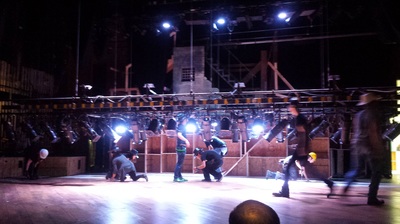






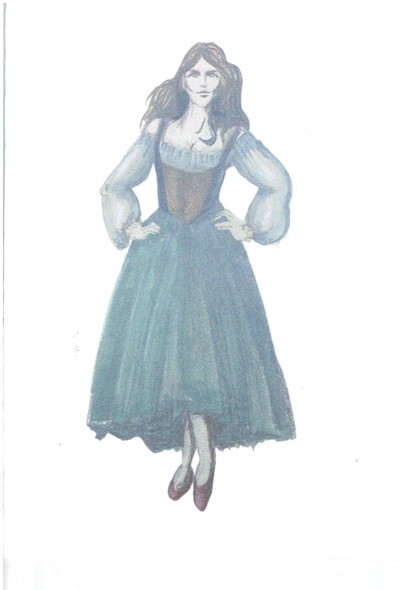




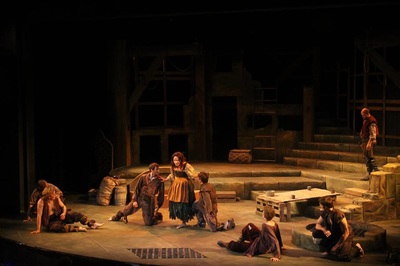






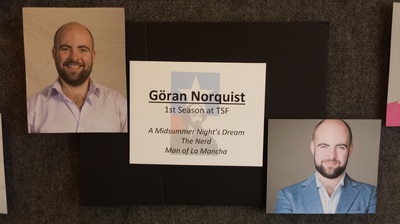











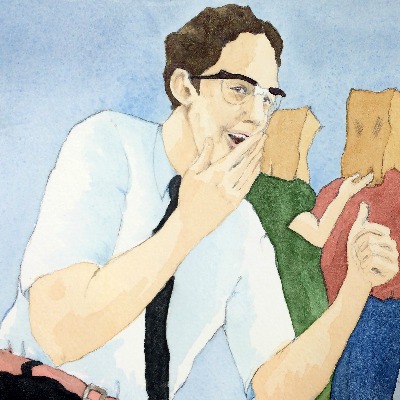



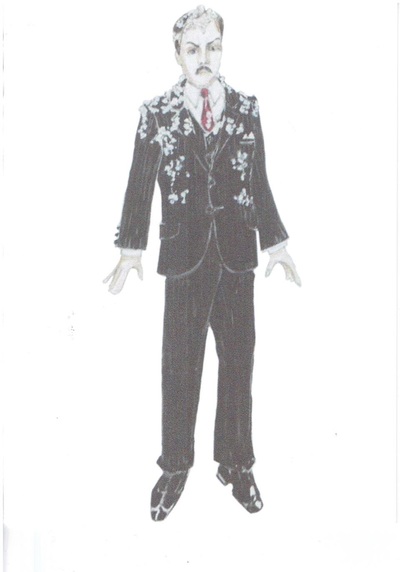









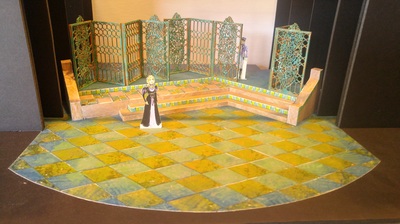


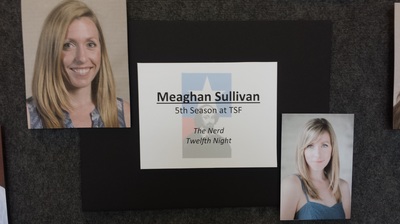
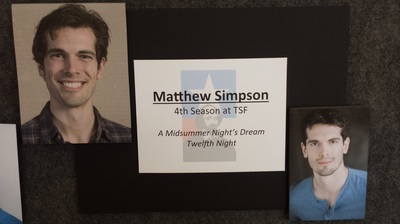

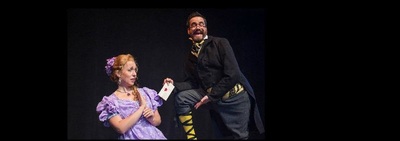

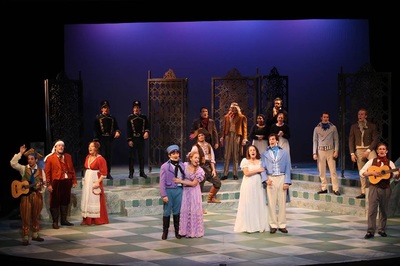
 RSS Feed
RSS Feed